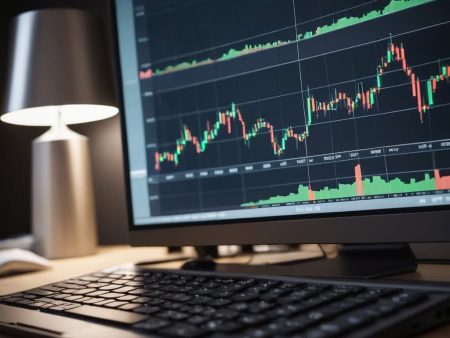Risk management in forex trading isn’t just some technical term you toss around—it’s the lifeblood of staying in the game long-term. If you’re not protecting your capital, you’re gambling, not trading. Let’s break it down into practical steps and strategies you can use to make sure you’re trading smart.
First things first: What keeps you up at night about forex trading? Is it the fear of losing money on a single trade? Watching your account balance go up in smoke? You’re not alone. Risk in forex trading is real, but it’s not the end of the road if you manage it right.
Understanding Risk Tolerance: Know Your Limits
Before you even think about placing a trade, you need to figure out your risk tolerance—how much you’re willing to lose if things go south. This varies from trader to trader. Your financial goals, experience level, and how you handle stress all play a role here.
Knowing your risk tolerance helps you build a solid trading plan that aligns with your goals. If you’re risking more than you’re comfortable losing, you’re setting yourself up for panic decisions, and that’s where most traders go wrong.
Position Sizing: Don’t Bet the Farm
Position sizing is crucial. It determines how much of your trading capital to put on the line in any given trade. A good rule of thumb? Risk only 1-2% of your total account balance on a single trade.
For instance, with a $10,000 account, you shouldn’t lose more than $100-$200 on any one trade. This isn’t about being timid; it’s about being smart and staying in the game for the long haul.
For more insights on position sizing and other strategies, check out this guide on LiteFinance’s Forex Risk Management.
Setting Stop-Loss Orders: Your Safety Net
A stop-loss order is a must. It’s a simple tool that automatically exits a trade when the price hits a level you set, protecting you from bigger losses. Think of it as your insurance policy.
Traders who consistently use stop-loss orders reduce their average losses by up to 30%. That’s not just a stat—it’s a reality check for those who think they’ll just “watch the market.” Set your stop-loss orders at logical levels based on actual market analysis, not guesswork.

Diversification: Spread Your Risk
One of the best ways to manage risk in forex trading is through diversification. Don’t put all your eggs in one basket. Spread your investments across different currency pairs to reduce your risk exposure.
By diversifying, you’re not just relying on one market condition to make or break your trades. If one trade tanks, another might just balance it out. For more details on diversification techniques, head over to BabyPips’ guide on Forex Risk Management.
Using Leverage Wisely: Double-Edged Sword
Leverage can be a game-changer, but it cuts both ways. Sure, it can amplify your profits, but it can also multiply your losses faster than you can blink.
If you’re trading with a leverage ratio of 100:1, a 1% move in the market can mean a 100% gain—or a 100% loss—on your investment. Use leverage cautiously, and only if you fully understand how it impacts your overall risk profile.
Continuous Monitoring and Adjustment: Stay on Your Toes
Markets change, and so should your strategy. Regularly review your trading performance and tweak your approach based on what’s working and what isn’t. A trading journal can help track patterns and refine your strategy.
It’s like being a coach to yourself—always looking for ways to improve. The more you understand your trading habits, the better you’ll manage your risks.
For a deeper dive into ongoing risk management tactics, you can explore IG’s top risk management strategies.
Common Forex Risk Management Strategies You Should Know
- Limit Risk Per Trade: Cap your risk at 1-2% of your account balance on each trade.
- Set Stop-Loss Orders: Automatically exit trades when losses hit a certain threshold.
- Diversify Your Trades: Spread investments across multiple currency pairs.
- Adjust Leverage: Use lower leverage to minimize exposure in volatile markets.
- Regular Reviews: Consistently evaluate and adjust your trading strategy.
FAQ
Q: Why is risk management so crucial in forex trading? A: Without proper risk management, you’re gambling. It helps protect your capital and ensures you can handle the ups and downs of the market.
Q: What is the best way to set a stop-loss order? A: Set your stop-loss based on market analysis, not gut feeling. Use technical levels like support and resistance to decide where to place it.
Q: How does leverage impact risk management? A: Leverage increases both potential profits and losses. It’s vital to use it wisely, keeping in mind how it affects your risk exposure.
Q: What does diversification mean in forex trading? A: Diversification means spreading your risk across various currency pairs, reducing the impact of a single poor-performing trade.
Wrapping It Up: Risk Management Is Your Best Friend
Risk management in forex trading is non-negotiable. It’s the difference between staying in the game or getting wiped out. By understanding risk tolerance, sizing your positions, setting stop-loss orders, diversifying, and using leverage wisely, you’re stacking the odds in your favor.
If you’re looking to dive deeper into effective strategies, check out Morpher’s blog on Forex Risk Management.
Remember, the goal is to stay consistent, protect your capital, and keep growing your account balance without taking unnecessary risks. You’re in control—make your trades work for you, not against you.




